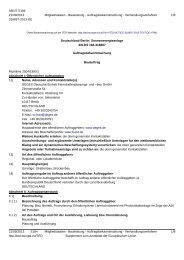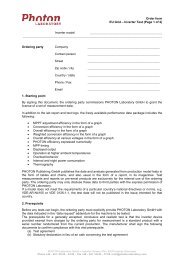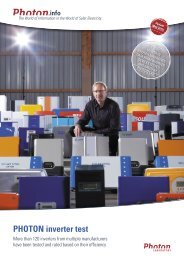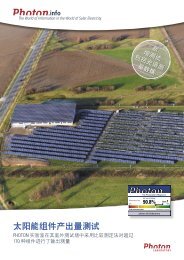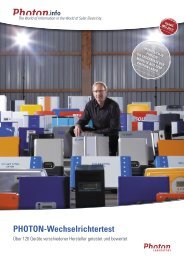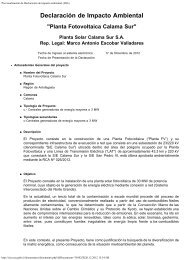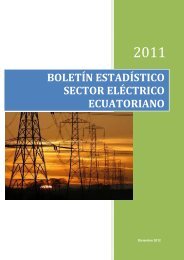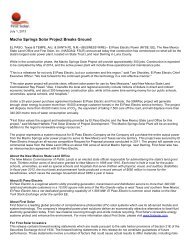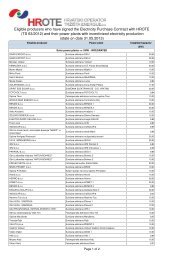INTRODUCTORY SPECIAL INTRODUCTORY ... - PHOTON Info
INTRODUCTORY SPECIAL INTRODUCTORY ... - PHOTON Info
INTRODUCTORY SPECIAL INTRODUCTORY ... - PHOTON Info
You also want an ePaper? Increase the reach of your titles
YUMPU automatically turns print PDFs into web optimized ePapers that Google loves.
Prominent shovel workers: California Governor Arnold Schwarzenegger, US Secretary of Energy Dr. Steven Chu (left of Schwarzenegger), and Solyndra CEO Chris Gronet<br />
(right of Schwarzenegger) break ground on September 4 th at what will be a 500 MW module factory in Fremont, California.<br />
What’s more, the loan is for a whopping<br />
$535 million – hence it’s no surprise the<br />
bigwigs have gathered to celebrate. On<br />
March 20, just 56 days after President<br />
Obama took office, the DOE condition-<br />
ally issued Solyndra the loan guarantee.<br />
During the six months between then<br />
and the groundbreaking in September,<br />
Solyndra and the DOE negotiated the<br />
final terms and conditions of the loan.<br />
Now the loan has been finalized, and<br />
construction has begun on what will be<br />
Solyndra’s second production facility.<br />
Unique technology<br />
Solyndra’s solar modules apparently<br />
impressed the DOE enough to catapult<br />
the company to the front of a com-<br />
petitive pack of solar firms looking for<br />
federal assistance. Founded in 2005,<br />
the company manufactures copper-in-<br />
dium-gallium-diselenide (CIGS) thin-<br />
film modules. But that alone doesn’t<br />
make Solyndra unusual. What’s unique<br />
about Solyndra’s modules is that they<br />
are cylindrical and the CIGS photoac-<br />
tive material is deposited inside the<br />
tubes. The cylindrical shape allows the<br />
modules to collect direct, diffuse, and<br />
reflected sunlight across a 360° surface,<br />
which gives them an advantage over<br />
flat modules when it comes to captur-<br />
ing sunlight. On the other hand, the<br />
modules’ conversion efficiency is just<br />
7.6 to 10 percent which is significantly<br />
lower than that of crystalline silicon<br />
flat modules. Crystalline modules can<br />
have conversion efficiencies as high as<br />
20 percent. According to Truman Kelly,<br />
Vice President of Marketing, Sales, and<br />
Business Development, the company<br />
initially considered several shapes, but<br />
ultimately chose the cylinder for its good<br />
optics, as well as for ease of manufactur-<br />
ing. Apparently, it’s easier for Solyndra<br />
to achieve a uniform CIGS coating with<br />
the cylindrical form, says Kelly.<br />
Solyndra’s modules also differ radi-<br />
cally from flat modules in terms of<br />
how they are installed. Traditional flat<br />
solar modules are typically attached<br />
to rooftops using additional mounting<br />
systems. Solyndra’s cylindrical modules<br />
are not attached directly to the rooftop,<br />
but instead mounted on low, flat racks.<br />
The weight of the racks alone keeps them<br />
anchored to rooftops – much like a table<br />
November 2009 47



